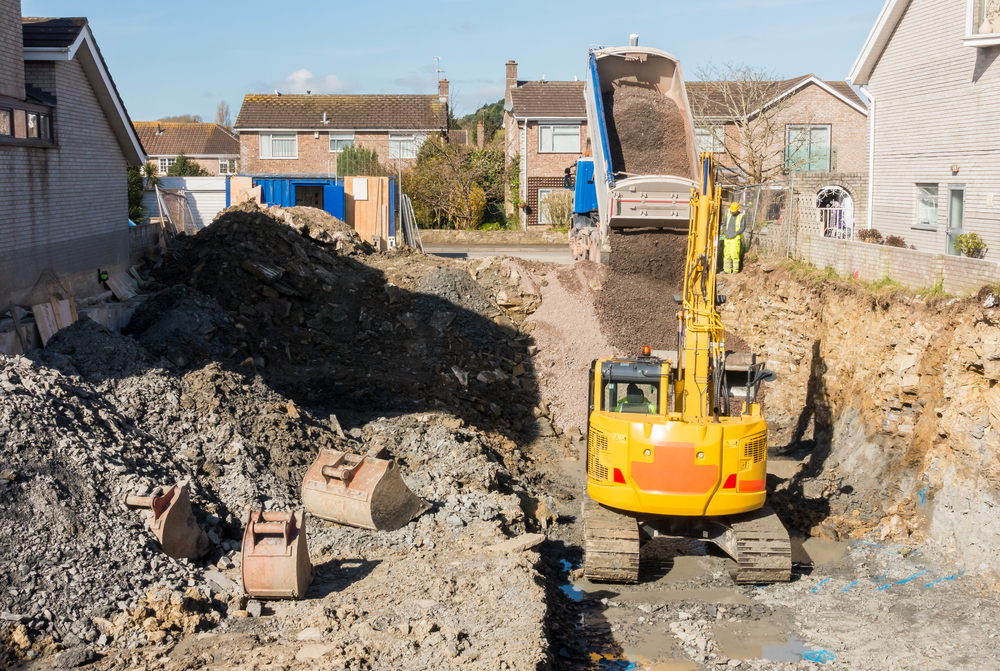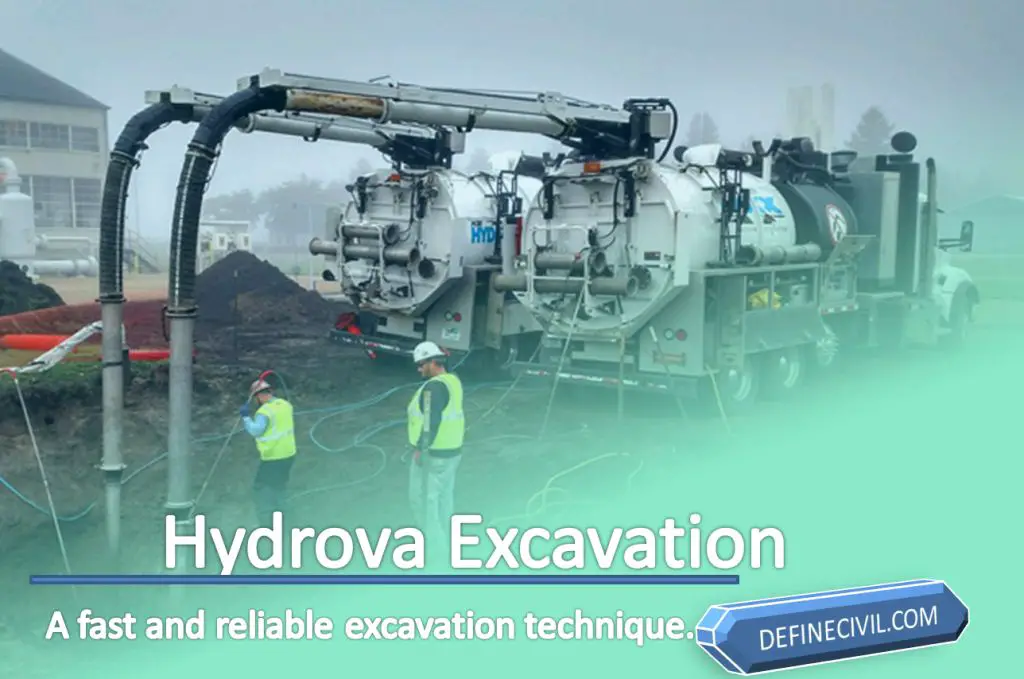Not known Details About Excavation Companies
Wiki Article
Things about Mini Excavator
Table of ContentsExcavating Contractors Can Be Fun For AnyoneExcavating Contractors - The FactsFascination About DemolitionThe Excavator StatementsSee This Report about Concrete Contractors


Scrapers or Pans excavate dirt in one area, haul and unload the soil in one more area (trencher). It is hard to match the efficiency of scrapers for cut/fill dirt procedure if the haul range is much less then a mile. Scrapes are generally drawn by a rubber tire wheel tractor and also are occasionally pressed through the cut location by a bulldozer.
There are lot of times that scrapers are not used for website grading and also a dump vehicle is used: the haul might be to long, the haul may cross roads where scrapers are not permitted, acid rock might be come across, tools accessibility, etc. Dump vehicles are in usual use and also most likely require little conversation.
Several trucks have a top-hinged tailgate that can not unload any rock wider then the tailgate width. "Rock body" beds, on the other hand, have no tailgates and can dispose any size rock, although their quantity capacity is decreased. These internet links reveal tools requirements for several common dump vehicles. Compaction Tools raises the thickness of the dirt as well as in some situations supplies a smooth, rolled surface.
Rumored Buzz on Mini Excavator
From an easy examination pit to percussion exploration to core drilling the proprietor has increasingly much more pricey alternatives that generate increasingly better data regarding the website underground. For instance, the Proprietor on a 100,000 SF structure job might license twenty uninteresting places with split spoon soil samples taken up until rock is reached and afterwards core samples of rock.Recognizing the kind and high quality of rock (from the core samples) and also location of rock (from the soils boring) is a genuine advantage in jobsite preparation. Conversely, the Proprietor of a 100,000 SF structure might make a decision to wage no geotechnical testing whatsoever. The decision concerning geotechnical screening is generally made by a Proprietor without input from the Construction Manager.
An expertise of the approximate area of the rock assists the Building Manager to prepare the series of steps following rock excavation. If rock is in one edge of a huge building job, for example, the planet excavation could begin at the contrary end of the building in order to begin foundation job soonest.
Beginning the foundation job early would be a great idea if the rock might be eliminated by ripping. If the rock is exceptionally tough and calls for considerable blasting, it may be sensible to hold foundation work until the blasting is finished. The Building Manager should collaborate these kinds of decisions and also utilize all the technological date available.
The 3-Minute Rule for Trencher
Unclassified excavation specifies that all rock or various other unforeseen materials (excluding harmful materials) experienced in the sitework will certainly be the obligation of the Contractor at no modification in contract expense. An unclassified excavation is simpler from a book-keeping point ofview and places the duty for geotechnical conditions onto the Sitework Service provider.Exactly How Water Influences Sitework? It's remarkable what a heavy rain can do to a construction job. Before the rain, the site might be dry, heavy tools effectively relocating planet, the other trades efficiently performing their work. Within hrs the task can be a sloppy, mud-hole with employee efficiency cut to regarding 10%.
In a lot of locations of the globe, the Construction Supervisor have to remember a basic reality: IT WILL RAINFALL. Excellent planning can reduce the damages and also disruption of a heavy rain to a jobsite. Usually the excavation as well as grading is entrusted to the Sitework Specialist (and also their rock excavation Foremen is responsible to monitor as well as direct the heavy tools as well as drivers).
Consequently the Building and construction Supervisor should be constantly knowledgeable about what rainfall will certainly do to the task website. It is not unusual for the Sitework Foreman to work their heavy tools for optimal performance and wish it does not rain. One of the very best ways to prepare for rainfall is to slope all grades to drain pipes and also to smooth rolled the surface prior to a rainfall.
10 Easy Facts About Excavator Shown
The Building and construction Supervisor should be perceptive sufficient to guarantee that hefty rain does not quit working on the project longer than needed. Daily conversations with Sitework Foremen may be called for to achieve this goal. At any time excavation is required below the existing water level on a job, the process of dewatering should be thought about.In a truly cohesive dirt, the water takes a trip so gradually via the clay or silt that dewatering is not generally essential for the reasonably brief time of excavation. Dewatering might be required for a single footing excavation or for a whole task website. One of the most usual dewatering approaches are trench drains pipes, deep wells and also well points.

Ground water infiltration can also be lowered by cutoff methods such as sheet piling. The prices for dewatering can be astonishing, excavation site including equipment service, labor and power (or fuel). High dewatering prices have faded the revenue margins on far a lot of projects. The several variables listed here make the job of approximating dewatering expenses really tough, and really inexact.
This option must always be taken into consideration when examining the possibility of dewatering. Clearly the option is just viable if gravity can run the water to reduced ground. Trench drains can be reduced with a backhoe and loaded with a crude, granular product (# 4 rock for general contractor example), however treatment should be exercised in picking the water electrical outlet kind and place.
The Definitive Guide to Trencher
A siphon, necessarily, utilizes air pressure to carry water from one altitude, up over an obstacle, to a lower altitude. The pipes in a siphon system have to be closed and some resourcefulness is usually called for to totally fill the siphon pipeline. The siphon pipeline need to be complete for the siphon to begin.A deep well includes a pump, pipe and an upright well casing. The pump consumption is at the bottom of the well casing (normally some crushed rock is placed down there as a filter tool) (excavation contractors near me). The water is pumped up the hose pipe, out of the well covering, as well as to an ideal discharge location.
In a rugged sand, as an example, a huge area can be pumped to near the pump intake altitude. A much less permeable dirt, on the other hand, decreases the effectiveness of a deep well. Since the pump is usually at the end of the deep well, there are no elevation restrictions due to vacuum lift, and also deep wells can lower the groundwater over 50 feet.
On the bottom of the wellpoint there is a 2 foot long display as well as valve, water jets out of this shutoff and also creates a hole right into which the wellpoint pipe can be lowered. This opening is frequently made a larger size (for instance 10 inches) to permit a rugged sand backfill to aid filter the water (general contractor).
Report this wiki page